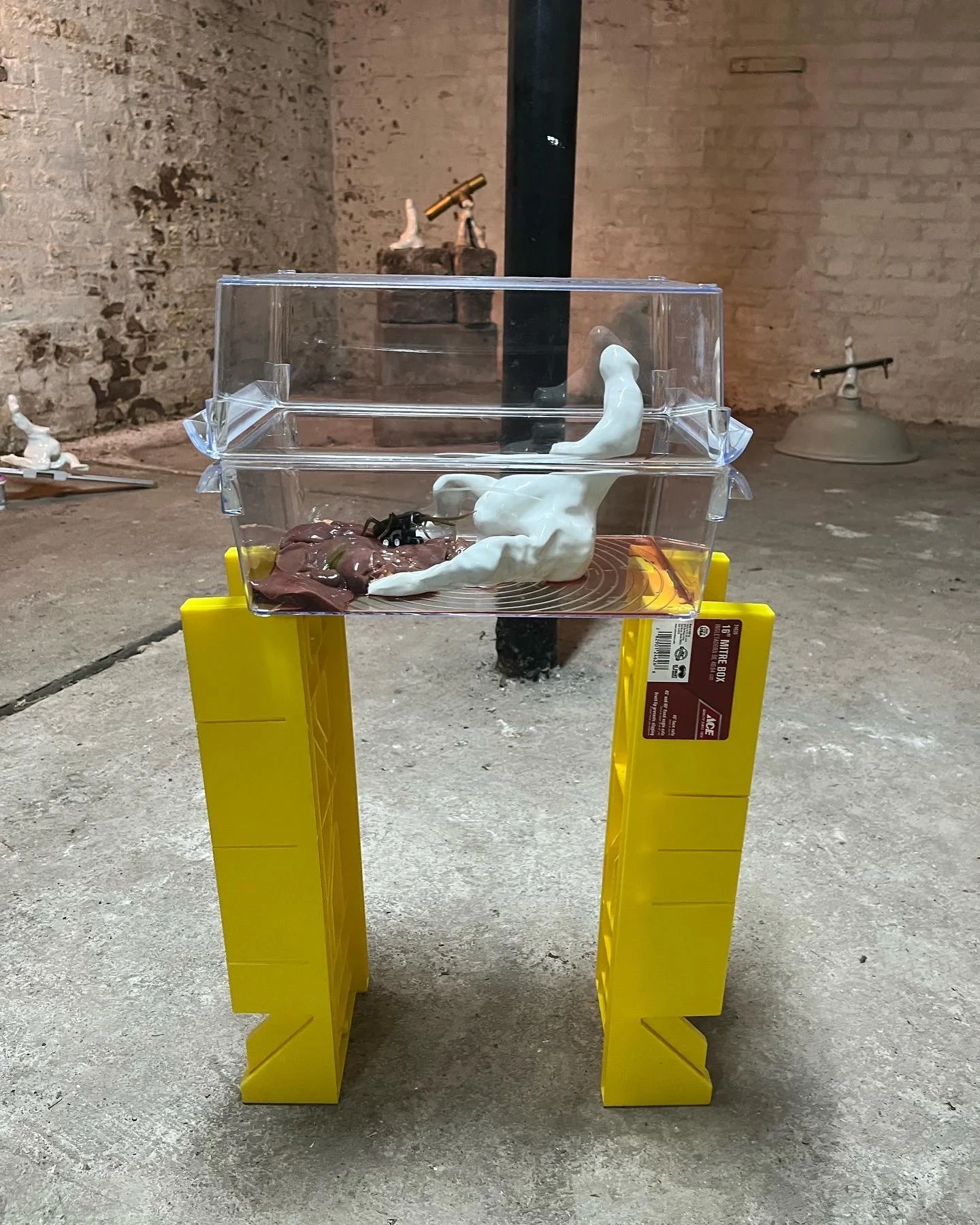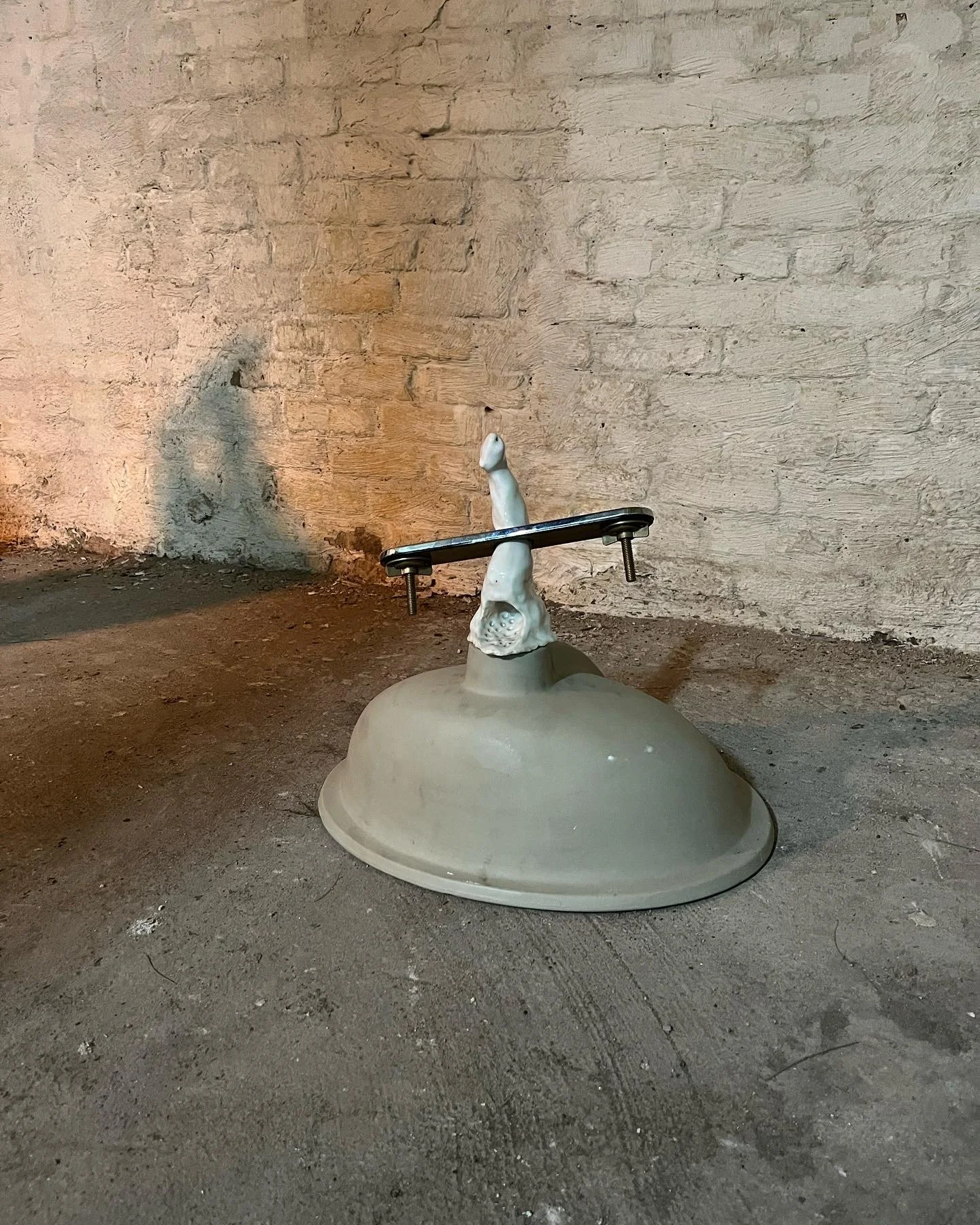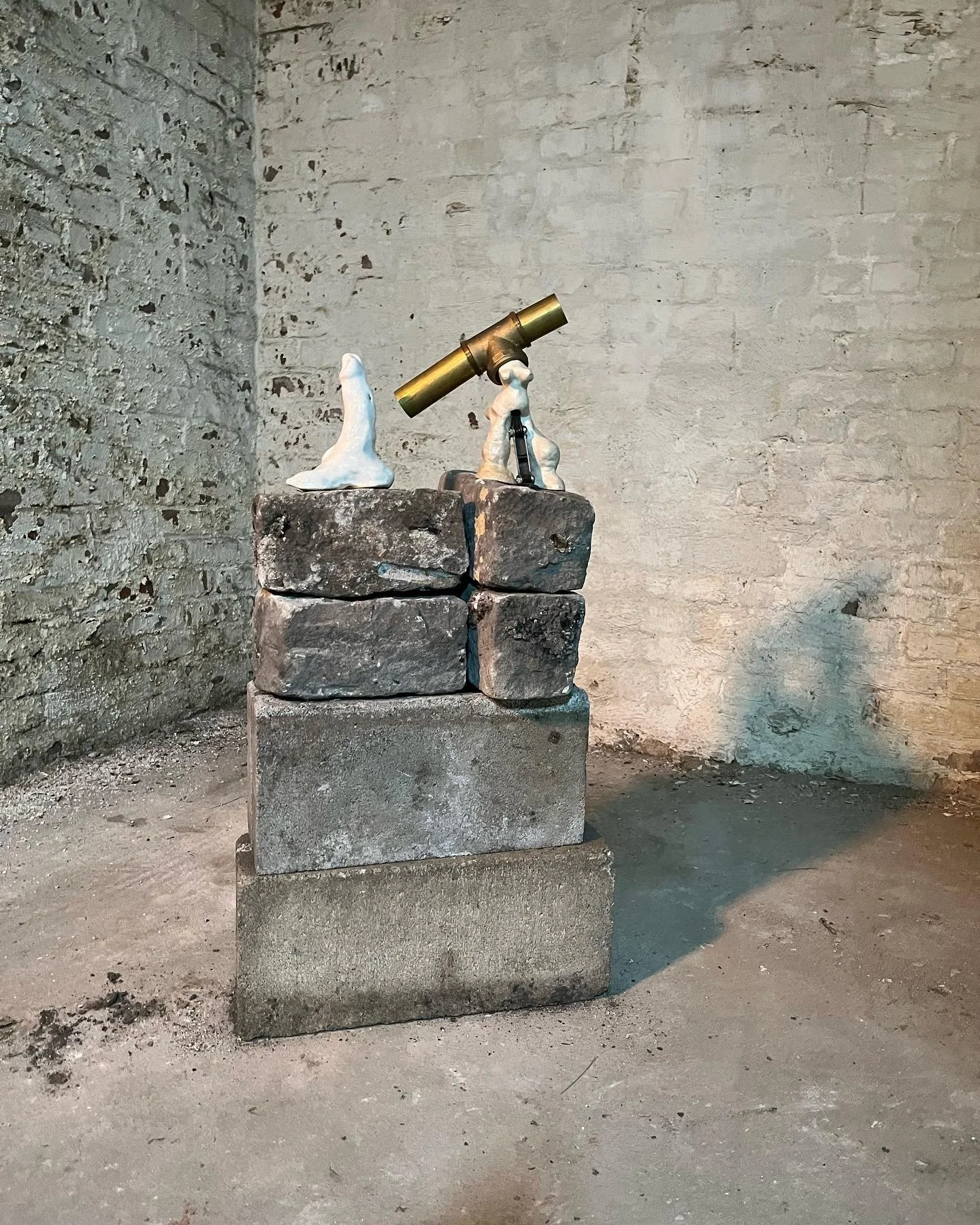I CRIED SO MUCH MY FEET ARE WET
MARIA DE VICTORIA
October 13—November 6, 2022
Maria De Victoria (Born 1980 in Lima, Peru) has organized an exhibition of ceramic sculpture in the basement of her apartment building in the East Village. While there’s much to be said about the individual works on view, the fact that De Victoria has sidestepped a traditional gallery and invited visitors to view her work in a boiler room is consistent with her radical and resourceful practice.
Most of De Victoria’s work is made with and for audiences excluded by the art world’s gatekeeping. In 2016, De Victoria, herself a former immigrant and housecleaner, approached four day laborers on the street in New York City, offering them each a day of work at a rate equivalent to her fee as a freelance video editor. Alongside the artist, they participated in a performance for the public at the Kate Werble Gallery in downtown New York, meticulously sorting large bags of rice and beans, which at the end of the day were collectively cooked and served.
In 2018, when the Metropolitan Museum of Art announced it would be changing its policy by only allowing visitors with a valid New York State I.D. to enter free of charge, De Victoria rented a van and picked up another group of day laborers from a street corner in New York City for a field trip to the museum. While all of the individuals who attended the outing lived in New York, most, if not all, were undocumented. The artist led the group on a tour and provided round trip transportation, admission, and a meal at the Met Dining Room.
Last year, in response to Peru’s severe oxygen shortage during the second wave of the pandemic (the country had the highest death rate per capita from Covid-19), De Victoria rolled a 10 liter oxygen canister from her home in the East Village to the Peruvian consulate on 49th street. The performance was not announced or recorded, aside from a few candid photographs taken from the street.
In addition to De Victoria’s socially engaged performance, over the past six years she has also been making ceramic sculptures. For the exhibition, a series of anthropomorphized phalluses are installed in the dank basement, taking over the space like an infestation. While some have been left untouched, others have been adorned with hardware, installed on ad hoc pedestals, turned into fountains, or, most sensationally, placed supine in a transparent refrigerator drawer appearing to birth raw kidneys. De Victoria, herself a mother, is not a biological parent to her child, who was birthed by her partner. Depicting a cock in labor is a gesture filled with both humor and pathos, at once representing everything she is and everything she’s not. In another poignant nod to her identity, De Victoria’s most recent work references sacred stone tenon heads built into the temples of pre-Columbian Peru. The figures are placed on upside-down garbage cans with some ambivalence, calling into question her relationship to the country from which she emigrated at the age of eleven years old.
by Julia Trotta





